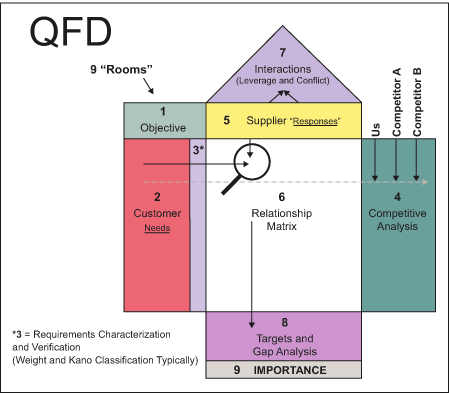
Several years ago, a company created a wristwatch pager – quite an advancement for its time – combining a wristwatch and pager in one. The developer instituted production quality at near Six Sigma level. Yet, the product never sold. While failure can occur for a number of reasons – quality, cost or being late to market – none of these factors were true in this case. Could the organization have reduced its chances of failure and assured its success?
Focused on revenue growth, the organization jumped into developing a new product as a niche market for an existing product. The development was rushed as teams were formed, marketing was set into motion, a design was completed and models were created. However, no one ever asked potential customers if they wanted a wristwatch pager. The result was a misdirected product that did not coincide with customer wants, or deliver value to potential customers.
The project was a failure, other than the company learned some new technology.
The early steps to develop a new product should include determining if an opportunity exists to meet a customer want. The organization should develop a thorough understanding of the market need. This will help determine the expected acceptance of the new product before development, production and marketing costs are incurred.
An organization must not bypass the critical steps of capturing and understanding the voice of the customer, prioritizing requirements, performing trade-off analysis and translating vague requirements into specific, unambiguous, attainable requirements for a product actually wanted and needed by the customer.
A Powerful-Yet-Inexpensive Approach
A simple-but-powerful approach, coupled with a relatively inexpensive process, exists to bring the needed content, structure, organization, weighting and measurements to the decision-making process. Quality function deployment (QFD) is used in a growing number of product development organizations to provide assistance with the planning process. QFD is often cited as a key to the total transformation of the Japanese automotive industry. However, in the last 15 years, QFD has become a standard tool in requirements gathering, analysis and prioritization across all development organizations.
The QFD house of quality chart below organizes information and assigns weight to desired performance parameters allowing organizations to clearly isolate the trade-offs that must take place when deciding what features to include in a new product or expanding product line.
Once the performance parameters are defined, a company can set specific targets, including important factors such as product strategy, competitive assessment, development costs, and risks. At this point, the organization can generate the new concepts that best meet key customer needs and requirements.

It is critical that the entire organization effectively understand and communicate the customer’s role. The product team should own the strategy for addressing customer needs, applying technical knowledge, expertise and resources, and assuring a shared vision to evaluate and select the best solutions.
QFD in Product Planning, Evaluation, Deployment
QFD is most effective when used in these types of product development activities – planning, evaluation and deployment.
Planning: The initial concern in product planning is to have a concise definition of the customer domain and its possible segmentation. The objective is not only to develop performance parameters, but to enable the formation of a strategy for approaching and understanding the customers and their needs. This information then drives the determination of the importance for each performance parameter and identifies which parameters are critical for customer satisfaction. The critical parameters then form the content for design measurements, which will later be used to monitor the success of the product.
Evaluation: In order for a proposed product solution to be accepted, it must be filtered by basic functionality and requirements such as standards or industry regulations. This filtering identifies solutions that provide the desired competitive advantage without violating any laws or standards. The evaluation includes a description of the expected technology needs for the new product. Organizations should carefully consider the impact of the technology since it may require a schedule that does not match the projected window of opportunity to meet customer requirements. If too much time passes between collection of the voice of the customer and implementation, the customer requirements will likely have changed or been superseded.
Deployment: During the deployment, the organization must identify which components and subsystems are involved in delivering the various specific targets and to what degree they are involved in these targets. The QFD process provides visibility into the relationships of key deliverables as derived from the initial customer needs and expectations.
A Method to Help Assure Success
There are many benefits to be gained from employing QFD on development projects. Using the QFD process provides a shared vision among team members and management by providing visibility and buy-in at each step before delving into development and implementation of the project. QFD enhances management support by tying project decisions to strategic direction. It also prevents teams from operating blindly since their activities are tied to all aspects of the planning process. In addition, QFD enhances the effectiveness of Six Sigma by providing clear visibility to critical parameters and maintaining alignment with the overall market strategy at all levels of the organization doing the development project.
Product planning begins with analyzing the performance of an existing product and improving or adding features. QFD can be instrumental in transforming products to meet continually changing customer needs and expectations. More importantly, organizations can avoid repetitions of the wristwatch pager and its associated business losses.